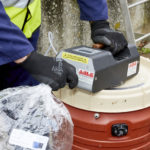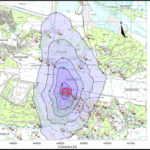ODOUR ASSESSMENTS: A COMPARISON

[vc_row][vc_column][vc_column_text]
ARE ODOUR ASSESSMENTS REALLY USEFUL IN PREDICTING ODOUR IMPACT?
[/vc_column_text][vc_column_text]In this article, we take a close look at the different methods of odour assessments. We aim to answer the question; “Are odour sampling surveys, sniff surveys and dispersion models really useful in predicting odour impact?” Often, our clients are not clear on the best odour monitoring and assessment method to choose for their needs. So today, we take a look at the pros and cons of the three types under discussion.[/vc_column_text][vc_separator color=”blue”][/vc_column][/vc_row][vc_row][vc_column][vc_column_text]
METHODS OF ODOUR ASSESSMENT
[/vc_column_text][vc_column_text]We focus on three different methods of odour assessments. First, we look at odour sampling surveys. Next, we focus on sniff surveys. Finally, we review dispersion modelling. You can use each type of assessment as a standalone technique, as well as in combination. However, each has its pros and cons.[/vc_column_text][vc_separator color=”blue”][/vc_column][/vc_row][vc_row][vc_column][vc_column_text]
ODOUR SAMPLING SURVEYS
[/vc_column_text][vc_column_text] During an odour sampling survey, we collect odour samples from identifiable sources. We then transfer them back to our UKAS-accredited odour laboratory for olfactometry analysis. Our odour panellists can test samples for odour concentration and intensity, hedonic tone, characterisation, chemical analysis and odour detection threshold. We then provide you with statistical results in a robust but easy-to-use report.[/vc_column_text][vc_column_text]
During an odour sampling survey, we collect odour samples from identifiable sources. We then transfer them back to our UKAS-accredited odour laboratory for olfactometry analysis. Our odour panellists can test samples for odour concentration and intensity, hedonic tone, characterisation, chemical analysis and odour detection threshold. We then provide you with statistical results in a robust but easy-to-use report.[/vc_column_text][vc_column_text]
What is it useful for?
[/vc_column_text][vc_column_text]You will find there are many benefits involved with an odour sampling survey. Many clients use the results to shape their odour management plans or to satisfy the requirements of their operating permits. In addition, you can use the data to test the performance of your odour abatement equipment. You can also apply the data for use in dispersion modelling, which we shall discuss shortly. Finally, planners find odour sampling surveys (and other methods) useful when creating local housing plans and for supporting planning applications.[/vc_column_text][vc_column_text]
What are the limitations?
[/vc_column_text][vc_column_text]This form of odour assessment requires skilled odour technicians to conduct the sampling. All sampling should adhere to European Standard BSEN13725:2022. Otherwise, any sampling errors can lead to erroneous data and skew the results. Make sure you engage a specialist odour consultancy. In particular, a consultancy holding UKAS accreditation will ensure the highest level of sampling quality.[/vc_column_text][vc_separator color=”blue”][/vc_column][/vc_row][vc_row][vc_column][vc_column_text]
SNIFF SURVEYS
[/vc_column_text][vc_column_text] A sniff survey is a subjective survey conducted by our team of fully trained and independent odour panellists. During the survey, we measure the impact of odour dispersal. We can also identify the source of an odour if unknown.[/vc_column_text][vc_column_text]
A sniff survey is a subjective survey conducted by our team of fully trained and independent odour panellists. During the survey, we measure the impact of odour dispersal. We can also identify the source of an odour if unknown.[/vc_column_text][vc_column_text]
What is it useful for?
[/vc_column_text][vc_column_text]In the first instance, most of our clients look at sniff surveys in order to verify nuisance odour complaints. But there are several other reasons you may wish to use this type of odour assessment. You will find it useful if you need to assess the odour impact of a site you don’t have access to. Or alternatively, when you need to identify the odour source out of several possibilities. You can also use a sniff survey to confirm the results of a dispersion model or to inform your odour management plan.[/vc_column_text][vc_column_text]
What are the limitations?
[/vc_column_text][vc_column_text]Sniff surveys are dependent on on-site conditions on a particular day. Occasionally you may find a survey is impacted by adverse weather conditions or unexpected problems such as locked gates. It is also important to understand that a sniff survey only provides an analysis of odour conditions at a specific time. This means you need to be quite careful in selecting when you conduct the survey, as results may be very different at peak operating times, for example. Our experienced team will help you select the conditions which will achieve the truest results.[/vc_column_text][vc_separator color=”blue”][/vc_column][/vc_row][vc_row][vc_column][vc_column_text]
DISPERSION MODELLING
[/vc_column_text][vc_column_text] Dispersion modelling is a process of mathematical modelling. Our highly-trained technicians use various conditions to create a statistical dispersion model. The conditions we look at include meteorological factors like wind speed and direction, air temperature, and atmosphere stability. We also include non-meteorological factors, such as the distance between odour source and receptor, and emission characteristics. In addition, we take into account the height of the odour release and source concentration level. We use the results to predict the potential odour impact of a new or modified site. We assess how the potential odours from your site are likely to travel and their impact concentration. Our team present you with quantitative data and graphical maps[/vc_column_text][vc_column_text]
Dispersion modelling is a process of mathematical modelling. Our highly-trained technicians use various conditions to create a statistical dispersion model. The conditions we look at include meteorological factors like wind speed and direction, air temperature, and atmosphere stability. We also include non-meteorological factors, such as the distance between odour source and receptor, and emission characteristics. In addition, we take into account the height of the odour release and source concentration level. We use the results to predict the potential odour impact of a new or modified site. We assess how the potential odours from your site are likely to travel and their impact concentration. Our team present you with quantitative data and graphical maps[/vc_column_text][vc_column_text]
What is it useful for?
[/vc_column_text][vc_column_text]When you conduct a dispersion model, you can establish the potential odour impact of a new site. Or indeed, one that you intend to modify. You will receive an idea of how odours are likely to travel and the potential odour impact concentration.[/vc_column_text][vc_column_text]
What are the limitations?
[/vc_column_text][vc_column_text]While dispersion modelling offers a statistically valid overview of potential odour impact, it can only capture a ‘snapshot’ of a particular scenario. As a result, specific conditions can occasionally be excluded from consideration. For example, a certain wind direction (where malodours would be notable in a real-life scenario) may not factor.[/vc_column_text][vc_separator color=”blue”][/vc_column][/vc_row][vc_row][vc_column][vc_column_text]
ASK US ABOUT ODOUR ASSESSMENTS
[/vc_column_text][vc_column_text]In conclusion, you have many forms of odour assessment to choose from. Each has its benefits and limitations. The most important thing to consider is which will best serve your individual needs. So, if you’re facing an odour challenge and need support, we can help. You can reach us on 01525 860222 or by clicking the button below.[/vc_column_text][vc_btn title=”Call 01525 860222 or click here to speak to us about odour assessments” color=”primary” size=”lg” align=”center” link=”url:https%3A%2F%2Fsilsoeodours.com%2Fcontact-us%2F|||” button_block=”true”][vc_separator color=”blue”][/vc_column][/vc_row]

